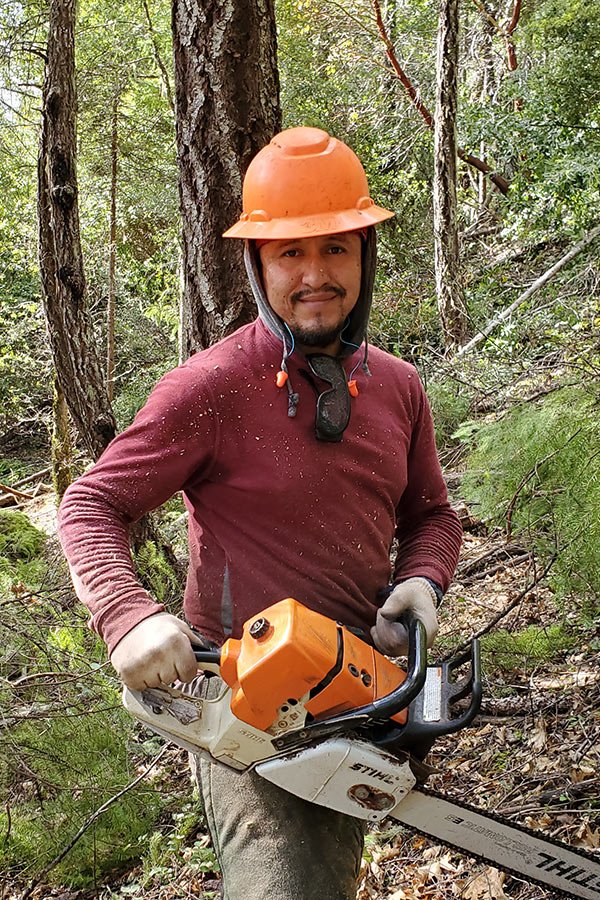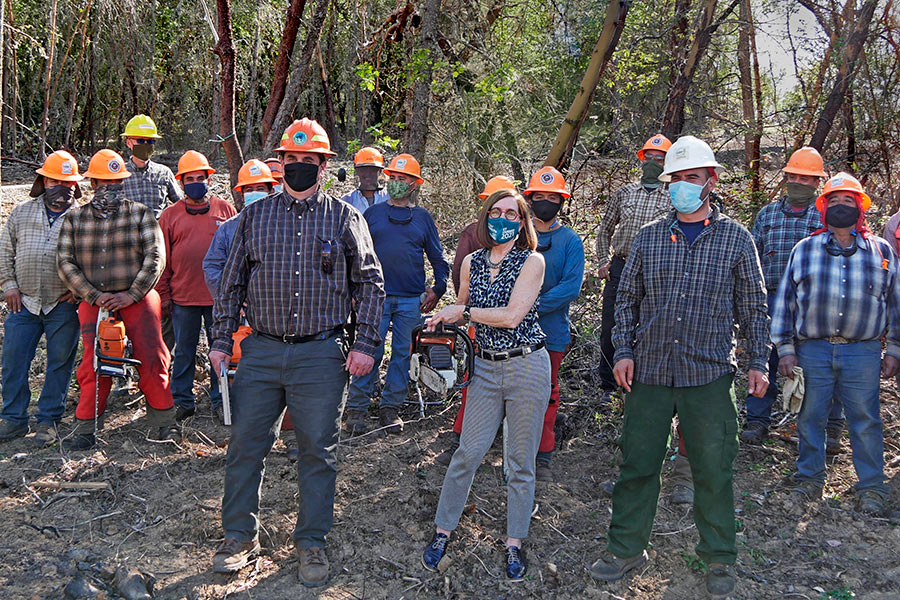Workforce Development

The Southern Oregon Forest Restoration Collaborative engages with diverse constituencies on forest health and wildfire risk projects to support resilient landscapes, thriving communities, wood manufacturing, and workforce development.
We envision thriving communities and healthy forests.
But to get there, we need to increase the availability of education, training, and small business development programs for forestry and restoration services.
Through these expanded services, our community will benefit from the increased availability of employees with the skill sets to manage forests, fight wildfires, implement forest restoration practices and develop small businesses that can be employed locally year-round. Developing the restoration economy as a critical industry sector in the Rogue Valley is a multi-dimensional set of challenges and opportunities:
- With 50% of the forest land managed by federal agencies, we need to align funding and policy.
- Public opinion shifts to see forest restoration work as permanent, active forest management with career paths and well-paid wages.
- Forestry service businesses need to be incubated and the manufacturing sector needs assured of sustained economic investment, supply and workforce.
- Workforce education, training, and internships will be invested in and supported.
If the pace and scale of forest restoration and risk reduction is to increase, there is a need for well-trained, highly engaged young adults to take up these professions.
Creating more jobs in the woods.
Boots-on-the-ground work in the forest is complex, labor-intensive and usually performed by seasonal itinerant businesses, often with guest workers. And currently, seasonal firefighters are starting to be difficult to hire because of low wages.
Changing how the public views our work is critical to a restoration economy. Active forest management will always be needed in the Rogue Basin, and our communities and land managers need to recognize this work as legitimate, necessary labor.
To not do so is to leave mismanaged forests at the mercy of fire and a threat to our communities. The irony is that one large wildfire costs more than years of restoration work. Working together as a community, we can support policies that sustain funding, and well-paying jobs, and promote healthy forests.

Benefits for
Communities & Forest
The Southern Oregon Forest Restoration Collaborative is honored to work closely with the Rogue Workforce Partnership to develop the Natural Resource sector as a key industry here in the Rogue Valley.
The Rogue Workforce Partnership is a business-led coalition that works to strengthen the economy of the Rogue Valley. They catalyze and convene dynamic partnerships with business leaders, K-20 educators, workforce service providers, economic development, and other key community partners. Their focus is on building innovative solutions to address employers’ workforce priorities and needs, especially those who sell their goods and services, which in turn drives our region’s economic growth.
Lomakatsi Restoration Project’s Promotora Program
For over 20 years, the Medford-based non-profit Northwest Forest Worker Center has served hundreds of Rogue Valley forest workers with resources and counsel around safety and workplace rights.
The Center’s Promotora Program has given a voice to the hundreds of Latinx forest workers who work in the woods on a daily basis to reduce the risk of wildfire, enhance wildlife habitat, and make the Rogue Valley a safer place to live. Their Promotoras de Salud (or Community Health Workers) have since met hundreds of forests workers around the community to deliver training and offer safety resources, primarily in Spanish.
Now, the Center’s legacy will continue on as a program of the Ashland-based non-profit Lomakatsi Restoration Project (LRP).

For more information on how you or your organization can get involved, please contact us or join our newsletter for project updates.

